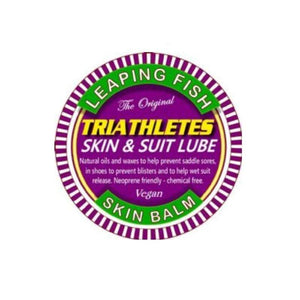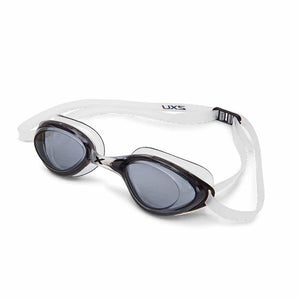
Your Comprehensive Triathlon Gear Guide
Triathlon is a popular form of multi-discipline race, involving swimming, cycling, and running. Varying in distance from ‘Sprint’ to ‘Iron’ length races.
Triathlon as we know it today has been gaining popularity amongst athletes since the 1970’s and shows no sign of falling out of favour any time soon.
Like any sport, Triathlon requires hard work and commitment to training, it also requires some specific kit. We’ve put together a list of the gear you’ll need along with a few of our own recommendations.

Bikes:
There is often a lot of debate around bikes in triathlon. Some will say you need the newest, fanciest, tri-bike, while others prefer a standard road bike. While neither are wrong, there are a few key differences to be aware of.
Tri-bikes are specifically designed for triathlon, they’re more aerodynamic than a regular bike and often have more storage features which can come in handy for stashing energy gels and other race fuel.
Road bikes tend to be less aerodynamic; the rider sits higher, and they have wider handlebars, creating more drag. Most beginner triathletes will start out on a road bike and eventually progress to a triathlon specific bike. Tri-bikes can be pricey so figuring out the sport before investing is worth it.
Some races, although rare, will specify which type of bike athletes should ride. There are also some triathlons where the cycle portion takes place off-road. In these scenarios athletes will require a mountain bike.
Helmets:
If you’re new to Triathlon don’t be fooled thinking you need to spend hundreds of pounds on a helmet, this simply isn’t the case.
Any standard safety tested helmet will usually do. Just make sure not to buy second hand as there’s no way to know if the helmet has been worn in a crash.
Cycling Shorts:
Any cyclist will tell you the value of a good pair of cycling shorts, however not all triathletes seem to have got the memo.
Although running in padded shorts might feel strange at first, you will be glad of them in the long run.
Goggles:
Every triathlete will need a pair of goggles. You should make sure to try them on in store before purchasing to ensure they are the right fit. Tinted goggles are preferable for outdoor swimming on a sunny day as they will act like a pair of sunglasses.
We recommend the 2XU Rival Goggles for a comfortable fit and anti-fog lenses.

Swim Cap:
In most races, especially outdoor, Swim caps are mandatory for safety reasons so swimmers can be spotted easily in the water.
It is common for events to provide swim caps for participants to wear, these are sometimes branded with the race sponsor, or colour coded to indicate different athlete categories.
You should always find out if a race will be providing swim caps and if not then you must bring your own. If you must provide your own then choose something brightly coloured like this COMPRESSPORT Swim Cap.

Wetsuit/Tri-suit:
For open water swims a wetsuit is often mandatory and will keep you warm in cold water as well as providing extra buoyancy.
If wearing a wetsuit is optional then you will have to weigh up the pros and cons. While there are benefits to wearing a wetsuit, it can also slow you down in the transition from swim to cycle.
Tri-suits are designed to be worn for the entire event, either underneath a wetsuit or on their own. Made from moisture wicking materials they are quick drying as well as being padded for comfort on the bike.
Anti-chafe balm:
This is one thing you will not regret purchasing, especially if you have to wear a wetsuit for the swim. Applying an anti-chafe balm under your wetsuit will allow for a speedy transition in T1.
Also useful during the cycle and run to stop clothes or tri-suit chafing.
At XMiles we like the SNB Sticks from Squirrel’s Nut Butter, and the Leaping Fish Triathletes Skin & Suit lube.


Sunglasses:
Sunglasses may come in handy during the cycle and run to protect against sun, wind, bugs, and even rogue energy drink that you might spill.
XMiles favourites are the Goodr Wrap G’s and the Knockaround Campeones.


Running Shoes:
Finally, you will of course need a pair of running shoes. Although you don’t need to buy the most expensive shoes on the market, they should be a good quality, well fitting, shoe with plenty of support.
Avoid gym shoes and ‘fashion’ trainers, these aren’t designed to provide the same support that proper running shoes have and will be more likely to cause you an injury.
Socks:
Some triathletes choose not to wear socks. This can save precious time during T1 when changing into your cycling gear but ultimately could cost you later down the line.
If you opt to go sockless you run the risk of developing blisters which could end up running an otherwise perfect race.
The best way to ensure comfort throughout your event is to wear a well-fitting pair of socks suitable for both running and cycling, like the Balega Blister Resist Quarter Running Socks.

Takeaway:
Hopefully our gear guide has provided some useful insight and will help you to put together your own triathlon kit list.
Remember you don’t need to spend a fortune on fancy gear, especially if you’re new to the sport. Although your gear can help support your performance, at the end of the day it’s the time and effort that you put in that will make the most difference of all.







